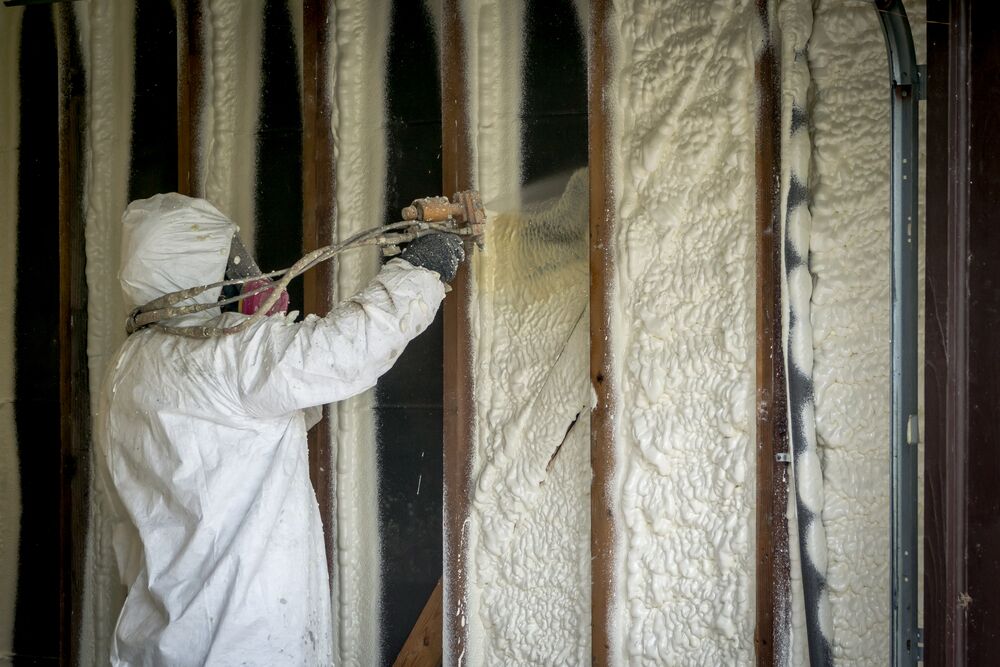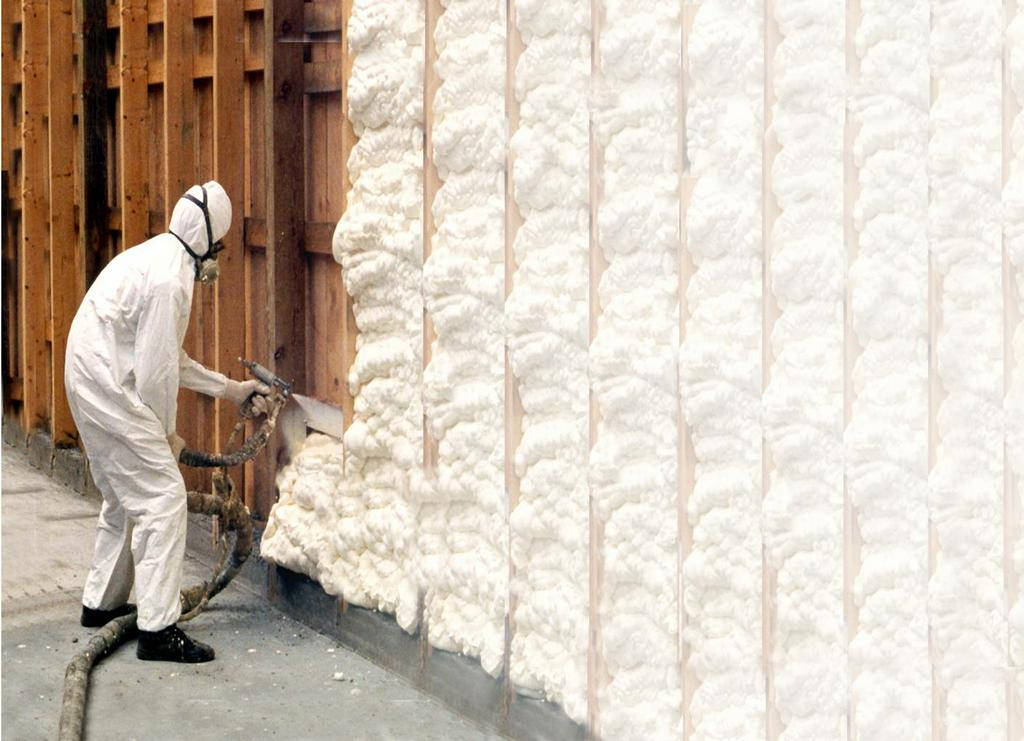Spray Foam: The Ultimate Option for Air Sealing and Insulation
Spray foam insulation has arised as a leading option for effective air sealing and thermal insulation, offering a special mix of residential properties that establish it apart from conventional approaches. Comprehending the full scope of its benefits, installation processes, and contrasts with various other insulation types is vital for making educated choices.
What Is Spray Foam?
Spray foam is a versatile insulation material that integrates the principles of air securing and thermal resistance to improve energy effectiveness in structures. Made up mostly of polyurethane or other similar substances, spray foam is applied as a fluid that increases upon contact with surfaces, developing a strong, constant layer of insulation. This special residential property allows it to load spaces, fractures, and spaces that standard insulation products might neglect, supplying a remarkable air seal.
There are two major kinds of spray foam: open-cell and closed-cell. Open-cell spray foam is lighter and extra flexible, providing excellent noise absorption and a reduced R-value per inch - Spray Foam. On the other hand, closed-cell spray foam is denser, providing a higher R-value, wetness resistance, and included structural integrity to developing components
The application process generally includes specific tools, making sure a seamless application that follows different substratums, consisting of metal, wood, and concrete. This adaptability makes spray foam appropriate for both new building and constructions and retrofitting existing frameworks. Its capability to create an impermeable obstacle considerably adds to lowering energy usage and enhancing interior air quality, consequently making it a preferred selection among property owners and builders alike.
Advantages of Spray Foam Insulation
Among the most substantial advantages of spray foam insulation is its exceptional capability to develop a continuous air obstacle, which properly lessens power loss. Unlike typical insulation materials, spray foam broadens to fill fractures and voids, ensuring that air leak is drastically minimized. This characteristic not just boosts power effectiveness however additionally brings about reduce utility bills over time.
Additionally, spray foam insulation gives exceptional thermal resistance, adding to a much more stable indoor environment. Its high R-value per inch permits reliable insulation in constrained rooms, making it optimal for attics, wall surfaces, and crawl spaces. The moisture-resistant homes of spray foam help avoid mold and mold growth, promoting much healthier living conditions.
An additional crucial benefit of spray foam insulation is its sound-dampening high qualities (Spray Foam). It efficiently minimizes sound transmission in between rooms, producing a quieter and a lot more comfy home environment. The toughness of spray foam also stands out, as it does not droop or resolve over time, preserving its performance throughout its life expectancy
Exactly How Spray Foam Functions
Understanding how spray foam insulation functions is essential for valuing its efficiency in air securing and thermal resistance. Spray foam insulation contains two primary parts: isocyanate and polyol material. When these elements are mixed, they undergo a chain reaction that creates the material to broaden quickly, creating a dense foam that loads splits, Clicking Here gaps, and tooth cavities.
As the foam expands, it abides by surfaces, forming a closed seal that considerably decreases air infiltration. This characteristic makes spray foam insulation highly reliable at stopping drafts and dampness penetration, which can cause energy loss and damages over time. In addition, the closed-cell version of spray foam supplies remarkable thermal resistance due to its rigid framework, efficiently reducing heat transfer.
The special homes of spray foam enable it to adapt irregular surface areas, making sure detailed coverage and a smooth obstacle. Therefore, spray foam insulation not just enhances power efficiency yet additionally adds to enhanced interior air quality by lowering the build-up of toxins and irritants. Ultimately, recognizing the technicians behind spray foam highlights its function as a superior option for insulation and air securing in both household and industrial applications.
Setup Process Review

Before installment, the space has to be appropriately cleansed and prepped, guaranteeing that surface areas are cost-free from debris, moisture, and dust. Since pollutants can endanger bond and total efficiency, this action is crucial. When the area is prepared, the application includes mixing the two components of the spray foam, which increases upon get in touch with and fills spaces properly.
Trained experts need to pop over here perform the installment, making use of customized devices to guarantee consistent insurance coverage and optimum density. Safety and security precautions, consisting of using protective equipment and making sure proper ventilation, are critical during this process. After application, the foam typically treatments quickly, developing a solid barrier that boosts energy efficiency.
Contrasting Spray Foam to Typical Insulation
When reviewing insulation choices, spray foam insulation stands out in comparison to typical materials such as fiberglass and cellulose. Unlike fiberglass and cellulose, which can allow air infiltration, spray foam increases upon application, filling voids and gaps to create an airtight seal.
Furthermore, spray foam supplies a higher R-value per inch than standard insulation kinds, supplying more efficient thermal resistance in a thinner account. This particular is particularly valuable in spaces with limited cavity deepness. Spray foam is immune to dampness and mold and mildew growth, which can be a considerable concern with cellulose and fiberglass, specifically in damp environments.
Nevertheless, spray foam insulation typically brings a greater in advance expense than its typical counterparts. Home owners have to weigh this first financial investment versus long-lasting power financial savings and efficiency benefits. Ultimately, while both insulation types offer their function, spray foam becomes a much more innovative remedy for modern insulation needs, specifically in terms of air securing and thermal effectiveness.

Verdict
In summary, spray foam insulation stands for a highly site efficient service for attaining optimal air sealing and thermal resistance. Its special buildings, including dampness resistance and sound dampening, make it suitable for numerous applications in both brand-new building and constructions and retrofitting projects (Spray Foam). The first prices might be higher contrasted to conventional insulation materials, the lasting advantages, such as considerable energy cost savings and boosted indoor air quality, validate the investment and emphasize its value in contemporary building methods.
Spray foam insulation has arised as a leading remedy for reliable air sealing and thermal insulation, using an unique combination of residential or commercial properties that establish it apart from standard methods.Spray foam is a functional insulation material that integrates the concepts of air securing and thermal resistance to boost power effectiveness in structures.When assessing insulation alternatives, spray foam insulation stands out in contrast to conventional products such as fiberglass and cellulose. Eventually, while both insulation kinds offer their objective, spray foam arises as an extra advanced remedy for contemporary insulation demands, particularly in terms of air securing and thermal performance.
In summary, spray foam insulation represents a very efficient solution for attaining ideal air securing and thermal resistance.